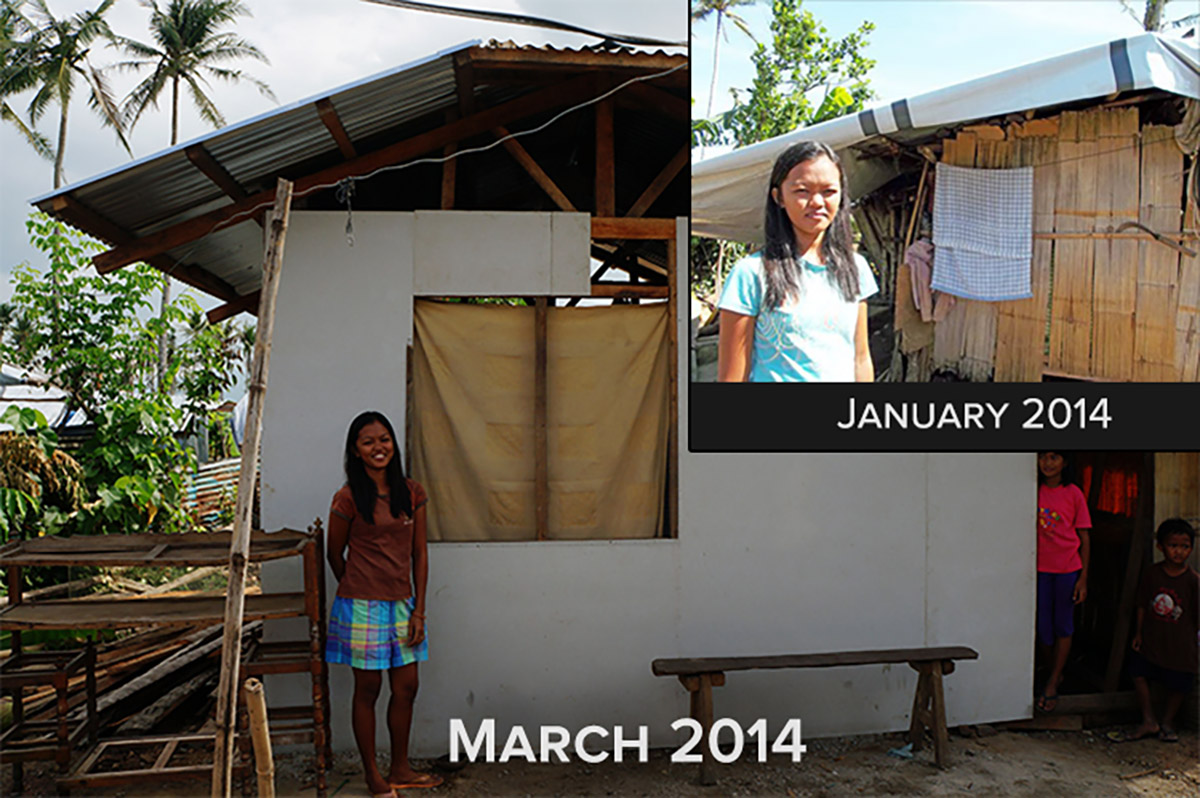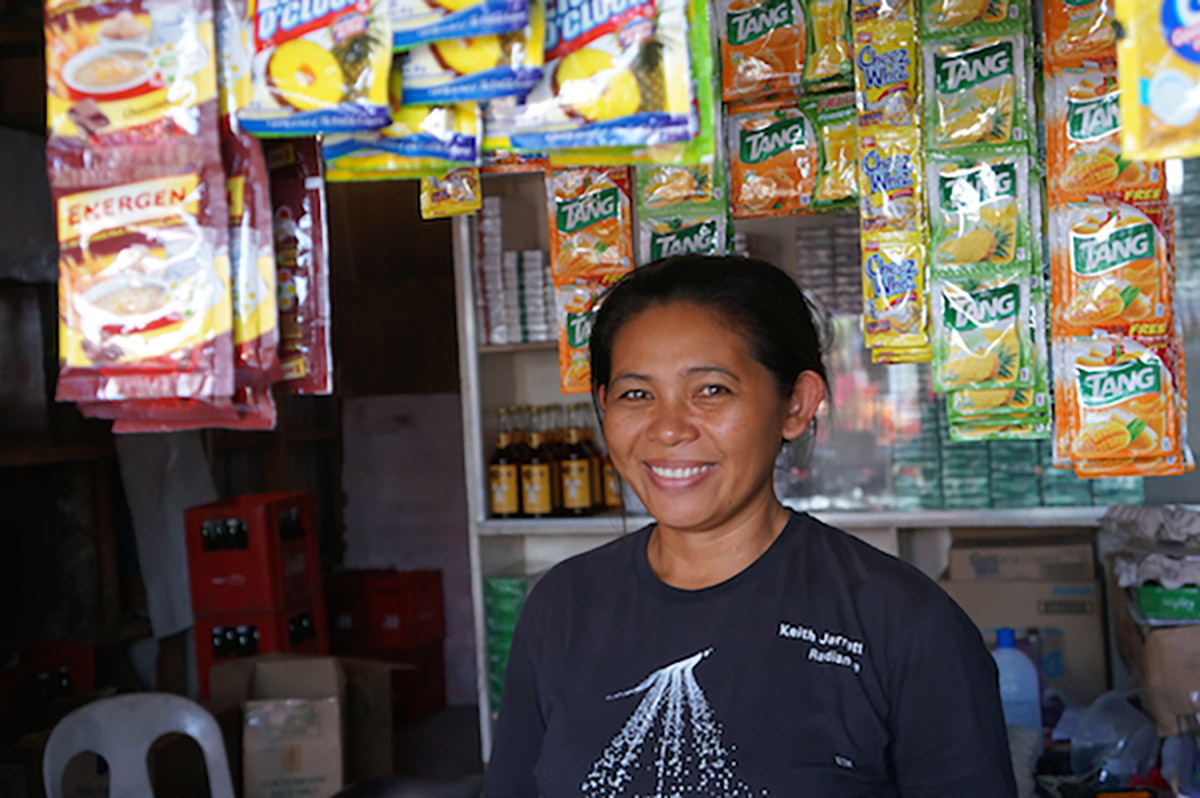Meg Gray and Jennifer Bi also contributed to this report.
In March, we introduced you to Jorgelyn Palima and Gerilina Ybanez, two Filipino women who used loans to rebuild after the devastating effects of Typhoon Haiyan.
The typhoon swept away Jorgelyn’s sari-sari business and home, leaving her living in a shelter made of salvaged materials. With the help of Kiva’s Field Partner in Ormoc, NWTF, Jorgelyn received materials such as coco lumber and gypsum board to reconstruct her home.

NWTF has taken great care in designing the loans it disburses for reconstruction and recovery. This is particularly critical since borrowers' normal income flows have been disrupted by the destruction. These recovery loans help borrowers create and repair housing for their immediate needs. NWTF did not want to burden borrowers at this point with higher loan amounts required to rebuild a home completely.
The majority of the loans NWTF has disbursed for recovery are also in-kind loans, supplying building materials instead of money. In Jorgelyn’s case, the supplies helped her husband rebuild a new house in one week. The new shelter has allowed the family to finally stay dry, since “the rain can’t come in anymore,” said Jorgelyn.
Although she “[has] to work harder now,” because of the typhoon’s damages, Jorgelyn took another loan to start a new business selling mobile airtime, and her carpenter husband has been met with a greater demand for his construction services.

A married mother of seven children, Gerilina Ybanez was also living in a temporary structure of salvaged materials until she received a loan from Kiva and rebuilt her home. An additional loan of 5,000 PHP from another source and support from her son working in Cebu helped Gerilina purchase inventory and supplies to restart her sari-sari business.

Like many people in the area, Gerilina makes a living off of multiple jobs and is also selling gas for motorbikes. There is no gas station in the small village that she lives in, so she goes to the next town over and buys jerry cans of gas which she then pours into smaller bottles and resells.
Myrna is another example of a borrower who has multiple businesses. Before the typhoon she split her time between a small store and selling BBQ. After the wreckage of the typhoon, which killed 8 of the members from her NWTF borrowing group, Myrna had to adapt to a very different market.
The neighborhood that she lived in has turned into one of the tent cities around
town, so once she received a recovery loan from NWTF her shop business has been strong because of all the new customers.
However, she stopped the BBQ business because people could no longer afford it under the new conditions.
While recovery will be a long process for the area, Myrna gave Kiva a message to share with lenders: “I just want to thank everyone who has helped Tacloban.”

PREVIOUS ARTICLE
From Soccer Pro to Sewing Pro in Sierra Leone →NEXT ARTICLE
The Beauty of Business →














